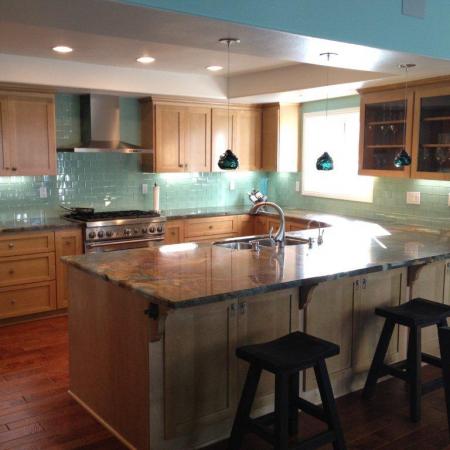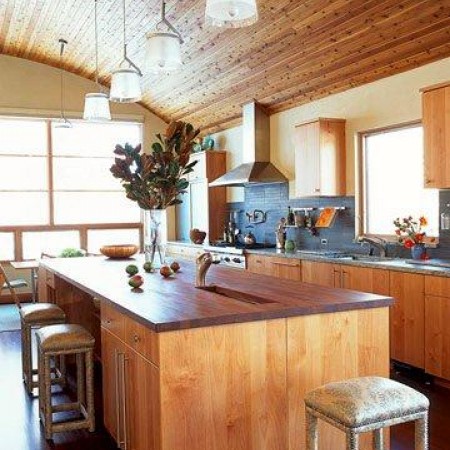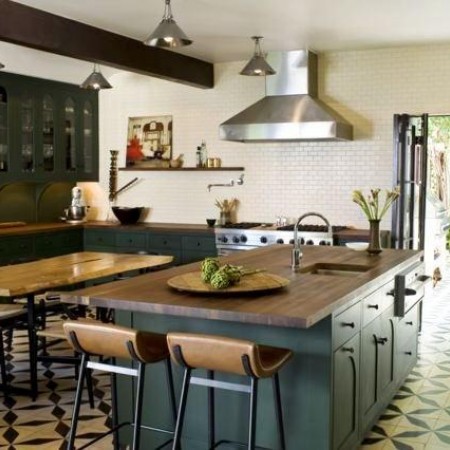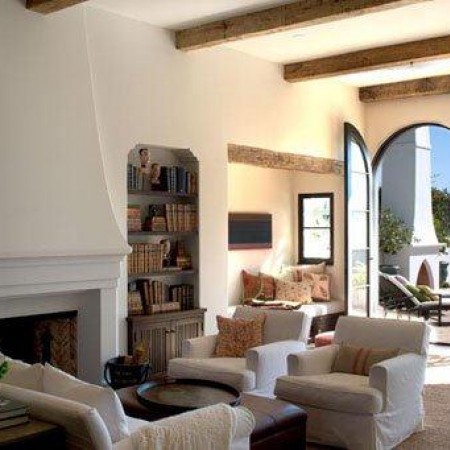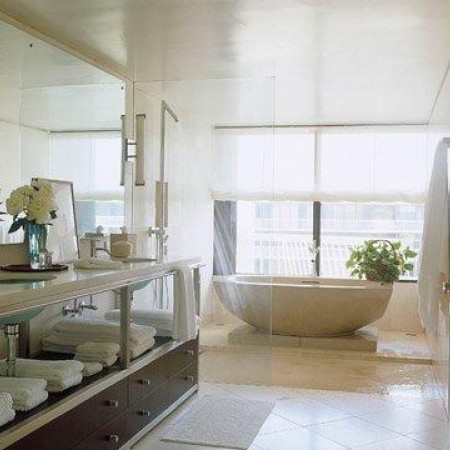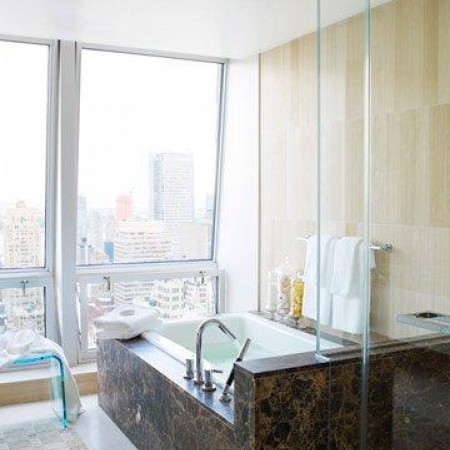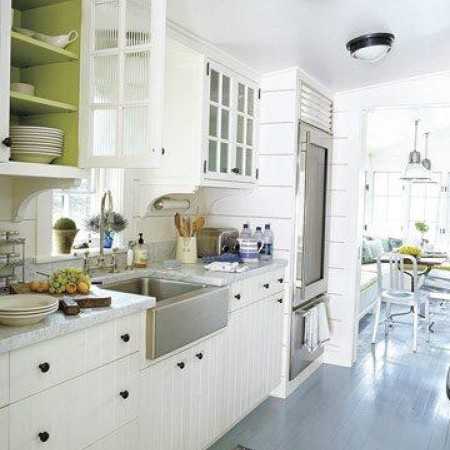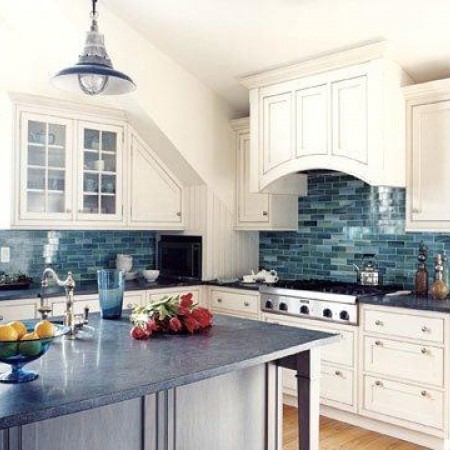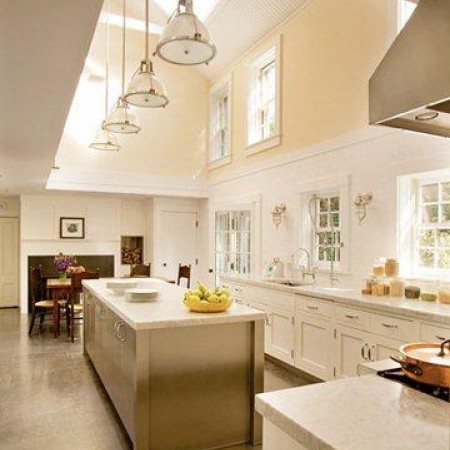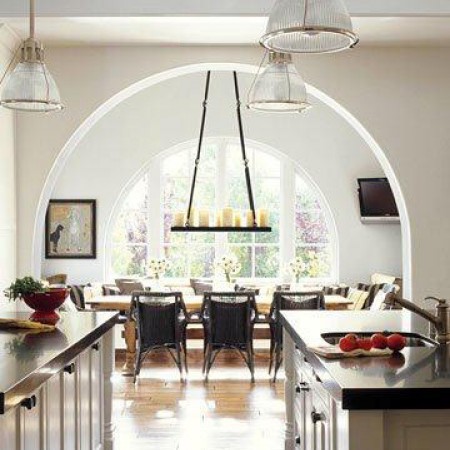Texturing
Texture falls into two categories: Hand texture and machine-applied texture. Remember: the heavier the texture pattern, the better it's hiding ability. That's important to know if your ceilings have many surface imperfections. Most minor flaws can be floated out with joint compound. Some ceilings and walls, however, really begin to sag between the studs over the years, and those problems can't be fixed without replacing the drywall. However, those kinds of flaws can be camouflaged by applying a heavier style of texture, saving you money. Another way to disguise the wavy appearance is to paint your walls or ceilings in flat finish paint instead of semi-gloss. Since semi-gloss is shiny, light travels right across the surface, and the waves create shadows. Flat paint does not allow this to happen.
Machine Applied Texture
This type of texture is typically found in newer homes. It is uniform in size and pattern and very modern-looking. The styles are knockdown, splatter, and orange peel, which is really a tiny splatter. The different patterns are achieved by adjusting the air flow and the size of the tip on the texture gun. Knockdown is achieved by first applying a splatter, then using a large flat knife to "knock down" the surface. Orange peel textures are typical in bathrooms and kitchens, where a minimal texture is desired for ease in maintenance and cleaning.
Hand Texture
There are a million and one different patterns and designs you can make with hand textures. A hand texture is applied by hand, not machinery, hence the name. There are many different tools and application methods used, depending on the pattern you desire. Each person lends their own personal style to the application process as well. No two walls are identical. Brushes, broadknives, sponges, trowels and the like are all commonly used. The two most common hand textures are skip trowel and imperfect smooth, with several variations in size and depth. Skip trowel is typically seen in homes built between the mid 50's through the 70's. This is a good choice for walls and ceilings that are less than perfect. Imperfect smooth is a variation on plastered walls seen in older homes built prior to the 60's. This texture shows every wave and wobble in the underlying drywall, so these are best left for pristine walls with excellent level and smoothness, unless you really like the "character" of a truly imperfect wall.
Venetian Texture
Venetian Texturing was formulated to imitate a complicated “Old World” Italian technique, which was used for centuries to create the look of marble on areas where marble could not be installed.
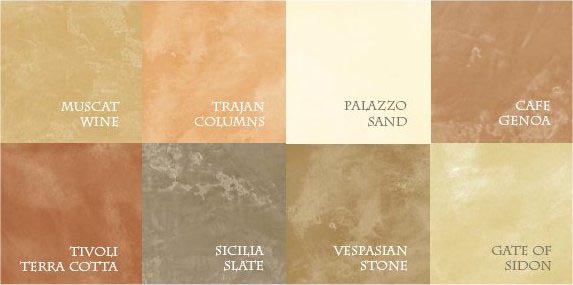
Venetian Plaster is a tintable acrylic plaster finishing system that can create a beautiful, high polished look. The level of sheen can be controlled by the applicator just by sanding and burnishing the plaster.

The application of Venetian plaster starts with Step One which is a texture coat. This coat will be rolled on in a manner that leaves hills & valleys. This technique will produce peaks that should be knocked down by smoothing lightly with a putty knife while wet. This will need to dry for 24 hours.
Step Two is skim coating. A skim coat of the same color is applied. This skim coat will need to dry for 1-2 hours. We can apply as many different layers and colors of the skim coat as desired.
We move onto Step Three when the skim coat is dry which is burnishing or polishing the plaster.
Step Four is protecting the finish with a Satin Topcoat. After being polished, it’s important that this Venetian Plaster be treated with care. It is not scrubbable, but it is easily repaired. This application will darken the finish slightly and will dry to a satin sheen.

